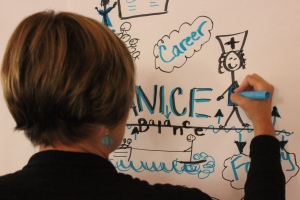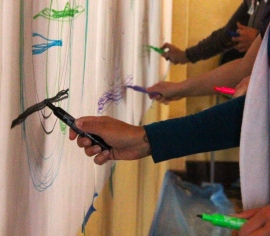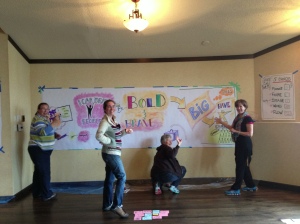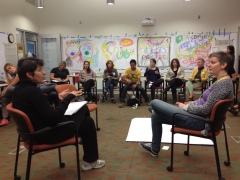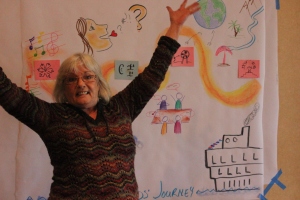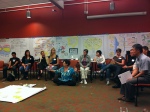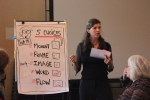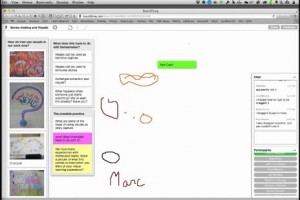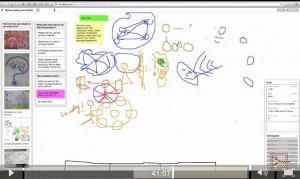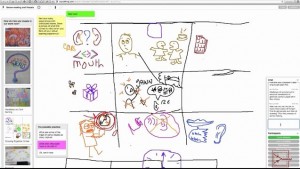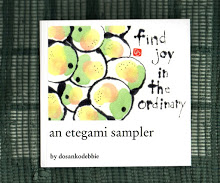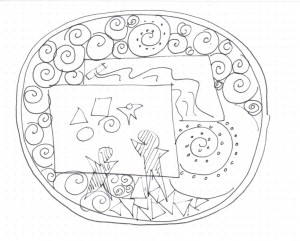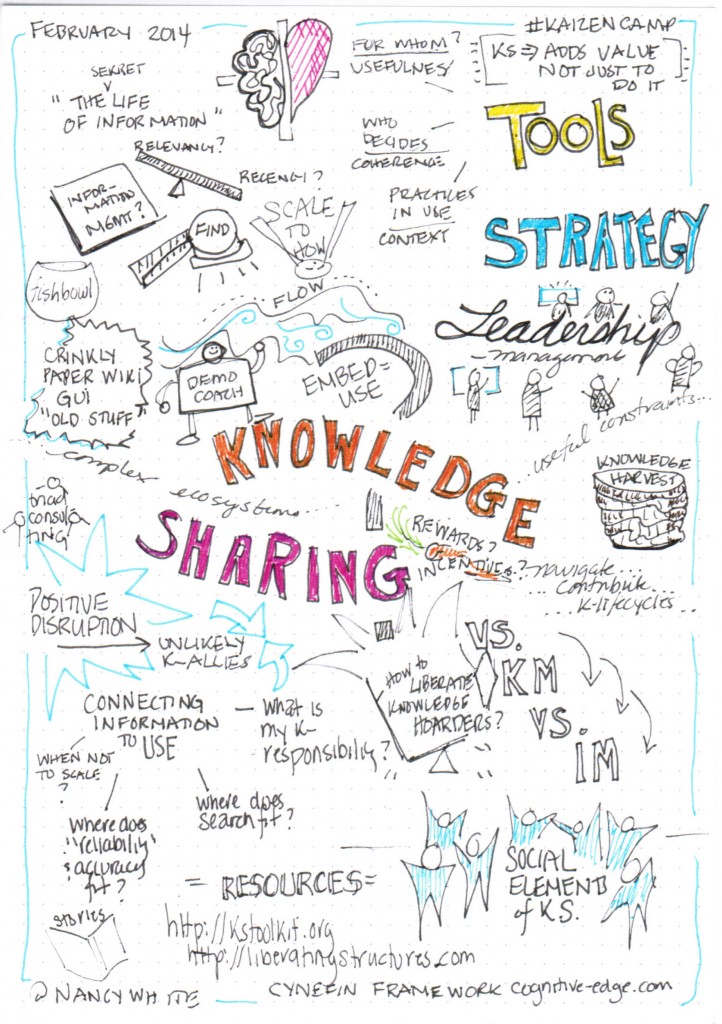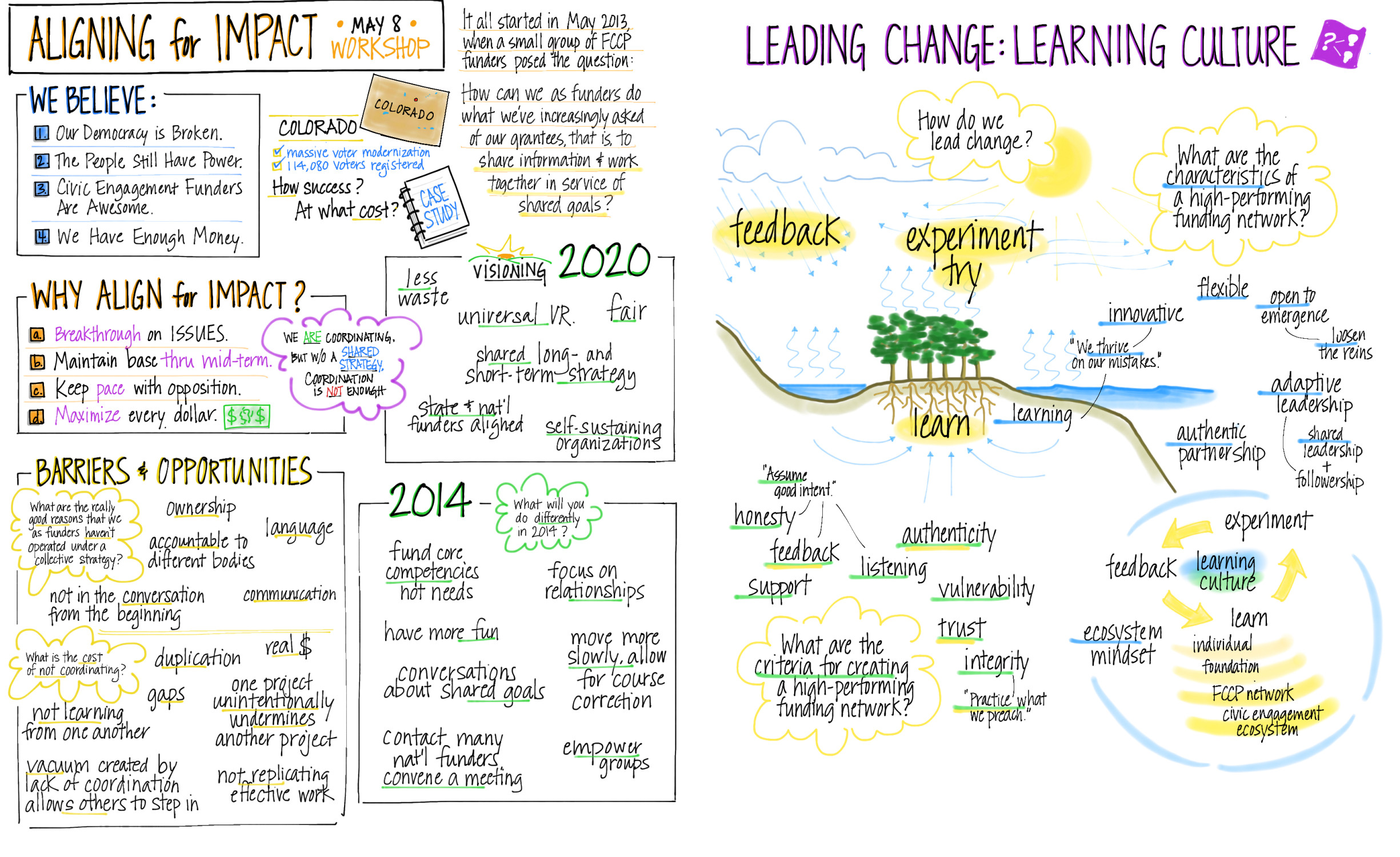Graphic Facilitation Workshop ‘Rosviz’ 2015 | Michelle Laurie rants and raves reminds us that it is that time again… drum roll….
Graphic Facilitation Workshop ‘Rosviz’ 2015
Welcome to the 6th Annual Graphic Facilitation Workshop July 13-14, 2015
Location: Beautiful Rossland, B.C., Canada
Imagine you are planning a project, facilitating a meeting or writing a report. Putting words on a page assumes people will understand them exactly. Adding visuals invites conversation, discussion and exploration. Visuals spark the imagination, help communities plan their futures and help groups track progress. This two-day experiential workshop provides the skills and confidence needed to use a range of visuals in your work and engage beyond words.
Day 1: I CAN DRAW – Hands-On Writing on Walls
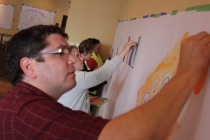 The first day, we will start out by touching the paper, playing with the pens and loosening up our drawing muscles. We’ll silence those pesky inner censors and address the basics of “drawing on walls” including basic shapes, lettering and some initial iconography. You will learn a variety of ways to draw faces and people, an often intimidating but key element for visual engagement. We’ll cover basic techniques and tricks that enable any of us to draw as a way of capturing and communicating ideas with each other. At the end of the day, you will apply your skills by visually planning a real project or meeting you have. Facilitation techniques including icebreakers, giving and receiving feedback and flip chart enhancements will be interspersed throughout the day.
The first day, we will start out by touching the paper, playing with the pens and loosening up our drawing muscles. We’ll silence those pesky inner censors and address the basics of “drawing on walls” including basic shapes, lettering and some initial iconography. You will learn a variety of ways to draw faces and people, an often intimidating but key element for visual engagement. We’ll cover basic techniques and tricks that enable any of us to draw as a way of capturing and communicating ideas with each other. At the end of the day, you will apply your skills by visually planning a real project or meeting you have. Facilitation techniques including icebreakers, giving and receiving feedback and flip chart enhancements will be interspersed throughout the day.
Day 2: Using Visuals For Group Processes & Facilitation Methods
The second day we will apply our graphic skills in practice. We will explore how visuals can enhance group processes such as planning, meetings and evaluation. We will create mind maps, mandalas and a range of practical templates. We’ll look at the use of visuals and participatory graphics (where the pen goes into everyone’s hands) with group facilitation methods such as World Cafe, Open Space, Appreciative Inquiry, and others. We will pay attention to preparation, the actual visual work, and follow up including digital capture of paper-based images. There will be time for lots of practice, feedback and facilitation support.
Throughout the two days you will have a safe, supportive (and fun!) space to practice and build confidence for real work settings. We also host a community of practitioners online who give constructive feedback and support long after the workshop is over.
“Thanks so much to both of you! It was an exceptional workshop and we both got a lot out of it on many levels. You packed it full and yet it felt so fun and energizing!” (Paula Beltgens, 2014 workshop participant)
This workshop is for you if:
– You plan a lot of meetings and want to make them more engaging, participatory, and meaningful;
– You do planning, strategy and assessments;
– You help groups make sense of complex ideas;
– You want new ideas on how to make your reports, presentations and videos more visually appealing;
– You want to be more engaging with groups;
– You want to hone your current practice; or simply…
– You are looking for a giant boost of inspiration, creativity and fresh ideas!
You might be a facilitator, community planner, team leader, trainer, teacher, project manager, marketing guru, organizational development consultant…everyone is welcome.
“I wanted to send a quick thank you for hosting such a wonderful workshop. I had a fabulous time and learned a lot, even though I already took the workshop 4 years ago I was thrilled to have the opportunity to take again. The content is rich, the hands on application powerful, the people genuine and the instructors first class. Being immersed in this creative process for two whole days is an amazing experience, I would recommend it to anyone interested in learning more about graphic facilitation and how it can help positively transform group process.” (Fern Sabo, 2x participant, 2010 & 2014)
You do NOT need previous experience or have to consider yourself an artist. At some level, we can all draw and use simple visuals to enhance our communications and engage diverse audiences.
As one participant said:
“Learn to draw with wild abandon! Take this course!” (2013 participant)
Check out our reflections and photos from 2013 workshops here and here, and the Harvest from the 2012 workshop here and one participant’s Prezi showing the rosviz12 Harvest Journal!
Here is more about what people are saying about our workshop:
“Wonderful workshop – best learning experience ever!”
-Leva Lee, BC Campus (2013 workshop participant)
“Thanks Michelle and Nancy – the workshop was amazing – I am already craving more!”
-Janice Watt, Interior Health Authority facilitator (2013 workshop participant)
“I am still on cloud 9 after the Graphic Facilitation workshop. Thank you soooo much. I feel recharged after that! You two are such great facilitators. You were willing to bend over backwards to ensure we were comfortable and enjoying ourselves/ learning to our full potential. There wasn’t a moment that I was not completely engaged during the workshop. “
-Maddy Koch, Community Planning Assistant (2012 workshop participant)
“The graphic facilitation workshop that Michelle and Nancy provided for Alberta Agriculture staff in fall 2011 was fantastic! They began by setting the stage through careful preparation with the intention of the participants knowing it would be a safe place to learn, stretch their abilities and try new things. And it worked. Participants found the workshop to be energizing, fun, and interesting, but most of all useful. Everyone walked away with ways they planned to incorporate the concepts into their daily work to better engage co-workers, partners and clients. From using it in everything from agendas, minutes, flipcharts and handouts; to ice breakers, meetings, and team building; to note-taking, brainstorming and other planning processes; the graphic facilitation techniques are here to stay. A huge thank you to Michelle and Nancy for lighting the fire!”
-Sharon Stollery , Ag Industry Extension Branch, Alberta Agriculture and Rural Development (2011 workshop)
Looking for more detailed information? Download the list of skills we will cover: Rosviz14_Tools_Takehome_List
And More Testimonials:
“What the RosViz11 gave me was the permission to draw without having to be an “artist”. Such joy! Thanks Michelle & Nancy.”
-Laurie Webster , Consultant with Cognitive Edge (2011 workshop participant)
“I have so many good things to say about the workshop I don’t know where to begin!”
– Sylvia Currie, Curriculum Development and Academic Growth, BC Campus (2010 workshop participant)
“I really thought the workshops was useful for me, and I’m not an artist. In a short period of time (2 days) I was able to learn simple and effective techniques to communicate basic ideas using symbols, easy figures, and colour. What I really liked about the workshops was that it was BIG. Big paper, whole body movements, large images. I’ve always drawn on small pieces of paper and this was a whole body experience!
We also did some great listening exercises where in a short period of time, we had to illustrate big ideas (that were on an audio recording). It was a lot of fun and a new challenge.
Overall, two thumbs up!”
– Rachael Roussin, Consultant (2010 workshop participant)
“Thanks for doing this again, Michelle (and Nancy!!). I highly recommend it!”
– Beth Sanders, Populus Community Planning Inc. (2010 workshop participant)
Preparation:
 Come prepared to get your hands dirty.
Come prepared to get your hands dirty.
 Dress is comfortable clothes that can get dirty and you won’t be sad if they are stained.
Dress is comfortable clothes that can get dirty and you won’t be sad if they are stained.
 Bring a pad of paper or journal to take notes – unlined is terrific.
Bring a pad of paper or journal to take notes – unlined is terrific.
 Bring a digital camera to record the fruits of your labor.
Bring a digital camera to record the fruits of your labor.
 We will supply the basic materials for the 2 days (and you get a starter kit to take home). Feel free to bring your own set of materials to play with as well.
We will supply the basic materials for the 2 days (and you get a starter kit to take home). Feel free to bring your own set of materials to play with as well.
COSTS: $850 CAD + GST (5%) (incl. two days training, starter kit and plenty of healthy drinks and snacks).
HOT DEAL! Bring a friend and you both get $50 off! (not combined with other offers)
Please note meals, lodging and transportation are not included. Accommodation information available upon request.
About your hosts:
“I am a learner, mom, gramma and chocoholic. I founded Full Circle Associates to help organizations connect through online and offline strategies. My practices are diverse, including online interaction designer, facilitator and coach for distributed communities of practice, online learning, distributed teams and online communities, doodler and visual practitioner. I have a special interest in the NGO/NPO sector and the emerging practice of using communities and networks for work and learning. I blog at http://fullcirc.com/wp/, teach, present and write on online facilitation and interaction, social architecture, social media and visual practices. I am co-author with Etienne Wenger and John Smith of Digital Habitats: stewarding technology for communities. Lately not only do I like to draw on walls (graphic facilitation), but I spend a lot of time cooing over my granddaughters!!! For more about my visual practice see http://fullcirc.com/wp/about/visual-and-graphic-work/.” Nancy White
“I have a passion for helping organizations and partnerships communicate as well as improve the way they generate and share knowledge. Lately my work focuses on helping groups create change based on their research. My work explores the interface of environment and development via strategic planning, assessments, facilitation and engagement. I incorporate visuals wherever I can particularly with the use of participatory graphics, templates, animation and reporting. I also use visuals in my personal life for planning weddings, newborns and travels! I am an associate with the International Institute for Sustainable Development, a member of the International Association of Facilitators, the Canadian Evaluation Society and IUCN’s Commission on Education and Communication. I am also your main contact for workshop logistics.” Michelle Laurie
To register you must email michelle.k.laurie(@)gmail.com to confirm your participation, provide your contact details and submit payment.
